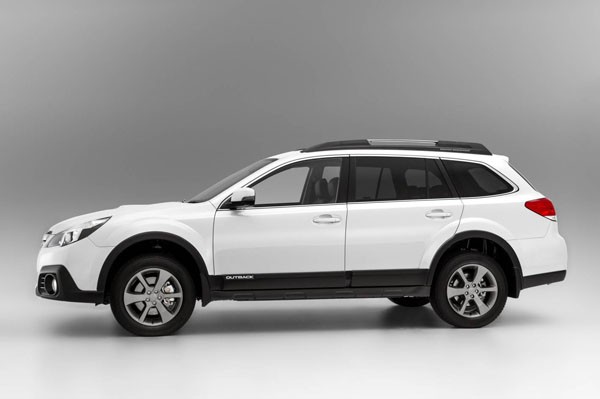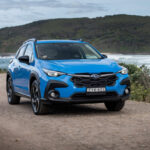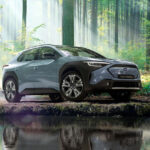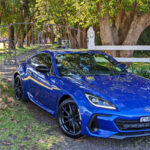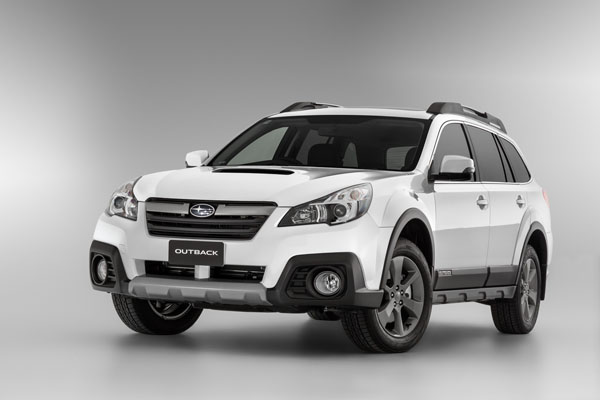
Styling changes to the latest Subaru Outback give it the rugged, semi-4WD appearance many buyers have requested
Early in 2013 Subaru Australia introduced the Subaru Outback with the option of a turbo-diesel engine mated to an automatic transmission. Buyers had been crying out for that economical and easy to use powertrain for years and sales jumped immediately.
At the time we were surprised that the new Subaru Outback didn’t have many real styling changes. In hindsight, the budget went to the engine and transmission guys; fair enough, times are tough for all car makers and conservative Subaru has always put engineering ahead of appearance.

Anyhow, the new edition Subaru Outback for the 2014 model season has been just announced and it has the sort of changes many potential – and existing – Outback buyers have been crying out for.
The modifications are extensive and are in some ways a return to the first generation Outback of 1996, giving it a rugged, semi-4WD look.
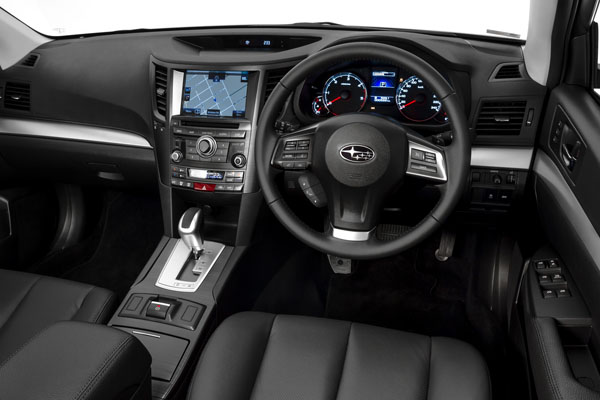
Changes to the Subaru Outback for MY14 include the addition of roof rails with integrated cross bars, side sills and cladding on the wheel arches, front and rear under body guard protectors and front mud flaps. These are complemented by a dark grey front grille, a black background to the headlights and dark grey alloy wheels
Customers not wanting the full body kit can choose to specify just the roof rails, side sills, dark grey front grille and alloy wheels, and the black background on the headlights. By doing so they get an Outback that leans in the direction of on-road station wagon.
Subaru estimates this adds $2500 of additional value, but that it has only increased the recommended price by $500 on each variant.
The lack of a diesel boxer engine until 2012 held back Subaru Outback sales and then the lack of a diesel/auto combination meant it was not competing against rivals that had this sought-after pairing –. almost 95 percent of all SUV sales in Australia have automatics.
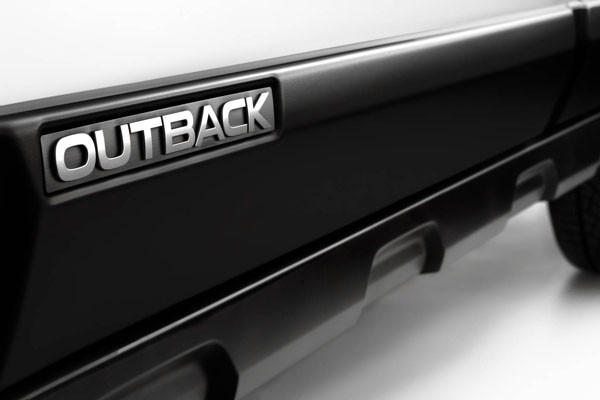 Since then we have road tested the diesel / auto Subaru Outback and were impressed with the operation of the CVT, in particular as it has been set up for those driving enthusiasts that don’t like the so-called ‘slipping-clutch’ sound of a CVT. With the Subaru unit, if you kick the accelerator hard the CVT jumps out of auto mode into one of the seven `steps’ that are the equivalent of gears in a traditional gearbox.
Since then we have road tested the diesel / auto Subaru Outback and were impressed with the operation of the CVT, in particular as it has been set up for those driving enthusiasts that don’t like the so-called ‘slipping-clutch’ sound of a CVT. With the Subaru unit, if you kick the accelerator hard the CVT jumps out of auto mode into one of the seven `steps’ that are the equivalent of gears in a traditional gearbox.
The silly thing is that you lose some performance by doing so as the engine no longer remains at exactly the right revs. But, hey, the customer is always right and if they want an engine to rise and fall as it changes gears so be it.
In auto mode the CVT is seamlessly smooth. In manual mode, using the steering wheel paddles the steps have gear-like rapid changes, faster according to Subaru than conventional gearboxes. Not including we presume DSG transmissions.
Driven at normal speeds the Subaru Outback 2.0D with the CVT is one of the smoothest and quietest cars on the market. Even driven hard noise intrusion into the cabin is minimal, even at high speeds on quiet country roads. The CVT has been designed to compensate for the narrow usable band of torque associated with diesel engines.
The complete 2014 model year Subaru Outback range is:
2.5i 2.5-litre petrol five-door wagon: $38,990 (CVT automatic)
2.5i Premium 2.5-litre petrol five-door wagon: $43,490 (CVT automatic)
2.0D 2.0-litre turbo-diesel five-door wagon: $40,490 (manual); $42,990 (CVT automatic)
2.0D Premium 2.0-litre turbo-diesel five-door wagon: $43,490 (manual); $45,990 (CVT automatic)
3.6R Premium 3.6-litre petrol five-door wagon: $57,990 (automatic)
Note: These prices do not include government or dealer delivery charges. Contact your local Subaru dealer for drive-away prices.




